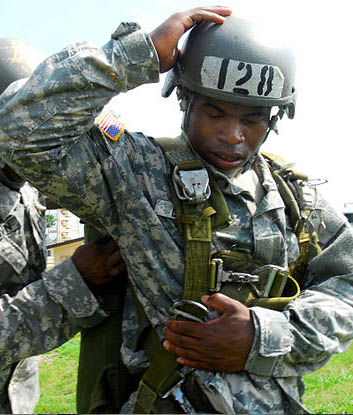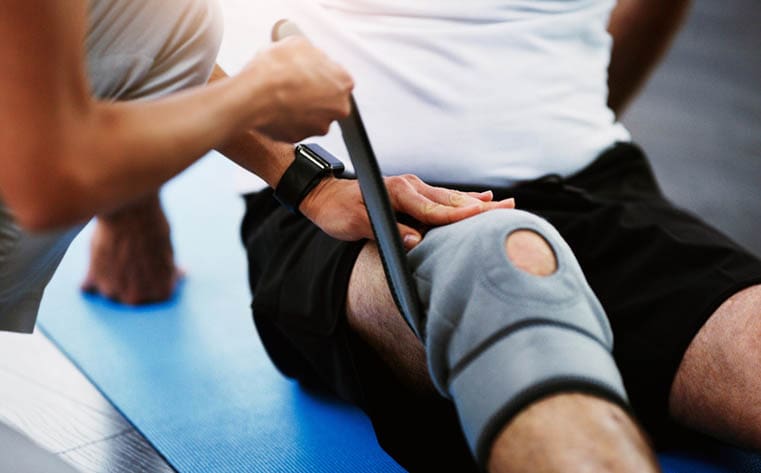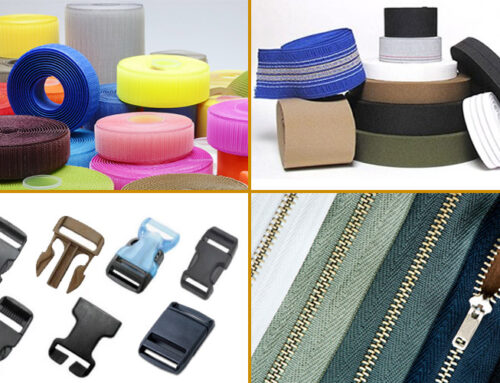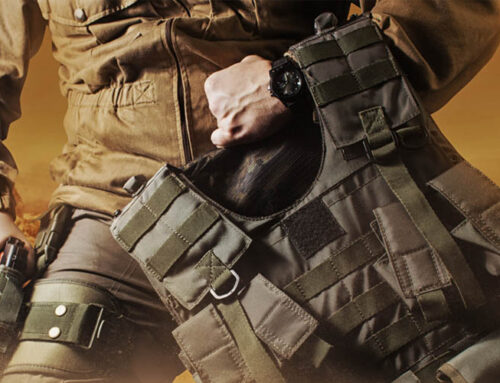Webbing fabric is a specialized type of woven fabric crafted to provide exceptional strength and durability for webbing applications across a wide range of industries. Its characteristics make it an ideal choice for creating reliable and robust load-bearing components.
Webbing fabric or webbings is often used in outdoor gear. One example would be hiker’s backpacks which are securely fastened with sturdy webbings, ensuring that the weight was evenly distributed and the gear stayed in place during the challenging trek. Webbings are strong, woven fabrics that are commonly used in various applications, including outdoor gear, apparel, bags, straps, and harnesses. They are typically made from synthetic fibers such as nylon, polyester, or polypropylene.

Webbings have a flat, ribbon-like structure and are known for their durability and strength. They are designed to withstand tension, abrasion, and heavy loads, making them ideal for applications that require strength and reliability.
The weaving process used to create webbings involves interlacing yarns together to form a stable fabric. This weaving pattern contributes to the webbing’s strength and structure. The thickness and width of webbings can vary depending on the intended use.
Webbings often feature properties such as high tensile strength, excellent resistance to wear and tear, and resistance to UV rays and moisture. They are available in a wide range of colors, allowing for customization and aesthetic appeal.

The versatility of webbings makes them useful in many industries, including outdoor sports and recreation, military and tactical gear, automotive and transportation, luggage and backpacks, and safety equipment. They provide a reliable and sturdy material for creating straps, handles, belts, and other load-bearing components.

The outdoor and recreational industry is one of the sectors that extensively uses webbing. The demand for webbing is high in this industry due to its strength, durability, and versatility. Various outdoor gear and equipment require webbing for different purposes, such as straps, harnesses, backpacks, tents, hammocks, climbing gear, and more.
Specifically, activities like hiking, camping, climbing, backpacking, and water sports heavily rely on webbing for their equipment. For instance, backpacks utilize webbing straps to secure loads, tents utilize webbing for guy lines, and climbing harnesses rely on webbing for safety and support.

Military Webbing
Furthermore, the military and defense industry also extensively use webbing for applications such as load-bearing equipment, tactical gear, straps, belts, and parachute systems. Webbing’s strength and durability make it suitable for the rigorous demands of military and defense applications.
While the outdoor and military industries are significant consumers of webbing, it is worth mentioning that webbing also finds applications in other sectors. These can include automotive, transportation, luggage and bags, safety equipment, furniture, medical devices, and many more. The versatility and reliability of webbing make it a valuable material across various industries that require durable and flexible load-bearing solutions.
Overall, webbings are essential textile components known for their strength, durability, and versatility, serving various functional and practical purposes across different industries.
Webbing fabric is known for its resistance to tension, wear and tear, UV rays, and moisture. These properties make it suitable for enduring harsh conditions and extended use without compromising its structural integrity.

Webbing in Space
Webbing has various applications in space exploration and related activities. Here are a few examples of how webbing is used in space:
- Tether Systems: Webbing is used in the construction of tether systems, which are long, strong cables that connect spacecraft or objects in space. Tethers can be utilized for various purposes such as stabilizing satellites, transferring momentum, generating electricity through tether-based power systems, or docking spacecraft.
- EVA (Extravehicular Activity) Equipment: During spacewalks, astronauts wear spacesuits that are equipped with webbing straps and harnesses. These webbing components allow astronauts to secure tools, equipment, and themselves to the spacesuit, providing safety and convenience during extravehicular activities. If you’re an astronaut tethered to the International Space Station and floating above the earth in a spacesuit at 17,000 miles an hour your webbing in your tether is something you hope is strong and durable!
- Cargo Restraints: Webbing straps are used to secure and restrain cargo during transportation to and from the International Space Station (ISS) or other spacecraft. They help prevent items from floating freely inside the spacecraft and ensure that they remain secure during launch, reentry, and docking procedures.
- Parachute Systems: Webbing is an essential component in the design of parachute systems used for spacecraft reentry and landing. It provides strength and stability to the parachute canopy, connecting it to the spacecraft or payload during descent, deployment, and landing phases.
- Habitat Construction: In the context of long-duration space missions or future space habitats, webbing can be used as a structural element for constructing lightweight, flexible frameworks or tension-based structures. It offers strength, flexibility, and versatility in assembling and securing various components of the habitat or infrastructure.
These are just a few examples of how webbing is utilized in space-related applications. The specific use of webbing may vary depending on the mission, spacecraft, and objectives of the space program.

Webbing in Health Care
Webbing has several applications in the medical field, primarily in the realm of patient care, mobility assistance, and equipment support. Here are some common uses of webbing in the medical field:
- Patient Restraints and Safety: Webbing straps are used in medical settings to secure patients safely during procedures, transport, or in beds or stretchers. They provide a means of immobilization or restraint when necessary to prevent accidental falls or unintended movement. If you’re working the night shift in a “big-city” Emergency Room patient restraints can come in handy when dealing with “challenging” patients such as dangerous criminals or injured and hallucinating drug addicts.
- Surgical and Orthopedic Support: Webbing materials are employed in the manufacturing of surgical slings, braces, and orthopedic supports. They are used to provide stability, immobilization, and support to injured or post-operative body parts, such as arms, legs, and joints.
- Prosthetics and Orthotics: Webbing is utilized in the construction of prosthetic limbs and orthotic devices. It helps to provide structural support, adjustability, and attachment points for straps or fasteners, enabling the comfortable and secure fitting of these devices to the patient. Webbing is a key part of knee braces, back braces and arm braces.
- Patient Lifts and Mobility Aids: Webbing is used in patient lift systems and mobility aids, such as transfer belts or gait belts. These belts help caregivers and medical professionals safely transfer and assist patients with mobility challenges, providing stability and support during movements.
- Medical Equipment Straps: Webbing straps are used to secure medical equipment, such as oxygen tanks, monitors, and medical bags, to carts, stretchers, or other devices. They help keep the equipment in place during transportation or while in use.
- Stretchers and Ambulance Restraints: Webbing is an integral part of stretchers and ambulance restraints, ensuring patients are safely secured during transportation. It provides a reliable means of strapping patients onto stretchers, immobilizing them to prevent injury during transit.Webbing’s durability, strength, and adjustability make it well-suited for these applications in the medical field, contributing to patient safety, comfort, and effective care delivery.John Howard Company are leading suppliers of webbing fabric and webbings such as nylon webbing, polyester webbing, and polypropylene fabric webbings.
Customized Pattern Webbing
Jacquard Weaving – Heat Transfer Sublimation Printing
Jacquard weaving is a weaving technique used to produce intricate variegated weaves. It is characterized by complex woven-in designs, often with large design repeats or tapestry effects. The term jacquard refers to the weaving technique used to produce the fabric. Jacquard weaving utilizes the same basic technique as other weaving methods, but with a twist. Jacquard patterns are woven directly into the fabric as it’s being made
Watch a Video on Narrow Fabric Loom for Jacquard Patterned Webbing
Heat Transfer Sublimation Printing
Sublimation printing heat transfer is a process that uses special inks and heat to print images on various materials including webbing. The inks change from solid to gas and penetrate into the surface of the material, where they become permanent.
There are two types of sublimation printing for pattern webbing:
- Dye-sublimation printing, which is a digital computer printing technique for producing photographic prints, ID cards, clothing, and more;
- Dye sublimation heat transfer imprinting, which is an inkjet printing technique for creating transfers that can be imprinted on textiles sublimation, or dye heat-transfer process, is a permanent printing process that decorates webbing (including ribbon and elastic) with artwork specified by our customers.
We provide unsurpassed color vibrancy, color uniformity and contrast on durable polyester fabric with our dye-sublimation process. With this process, the art actually becomes part of the fabric, allowing for unsurpassed permanence in color and detail – creating customized and unique pattern webbing for products.
In general, dye sublimation has two steps.
- First, we print a reverse image of a customer’s provided artwork onto transfer paper using ‘inks’ that are really polyester dye molecules suspended in a water soluble base.
- Second, we use a rotary drum press to transfer the image onto customer specified polyester webbing.
Our customized webbing process begins with the art that you provide us. As such, your design needs are limited only by your imagination. Our full in-house graphics department will help you to meet your exact specifications. Our Art Requirements specification sheet will help you to get started.
We Can Help You with your Webbing Fabric Questions and Needs
John Howard Company offers a wonderful selection of webbing in a variety of colors and strengths. We also offer professional webbing fabric cutting services to cut your webbing to the sizes you need. We invite you to talk to our product experts on how we can help you!






